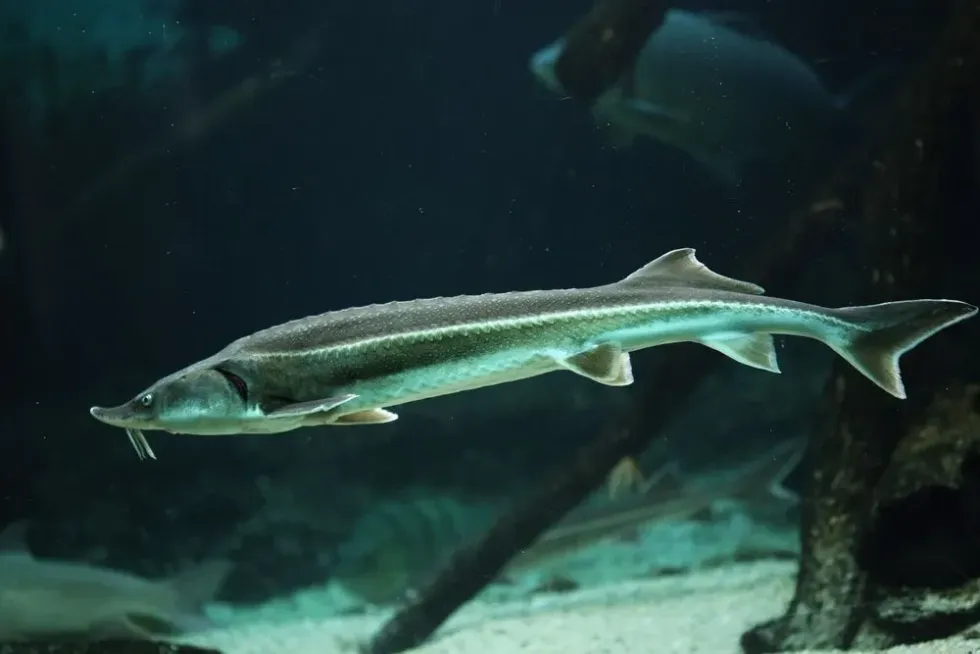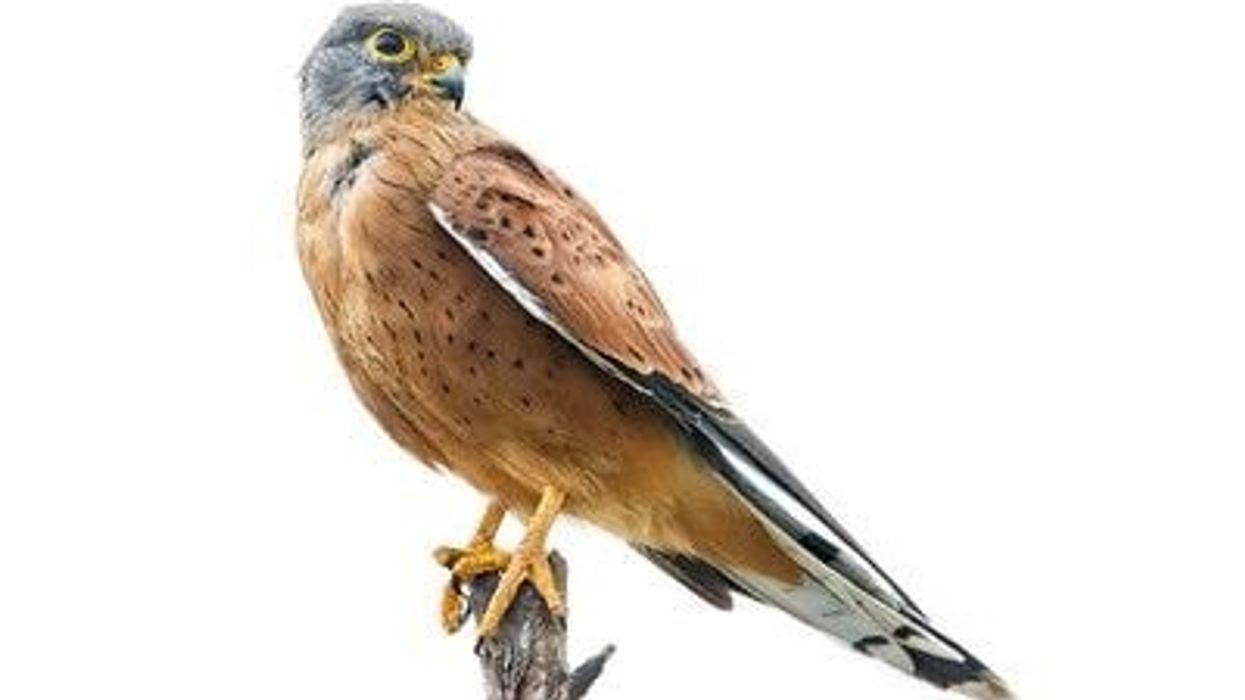The sterlet (Acipenser ruthenus) is a small species of sturgeon that are native to Eurasian rivers and can also be found in areas of the Black Sea, Azov Sea, Caspian Sea, rivers in Siberia till the far east in the Yenisei.
The sterlet can be also kept in garden ponds as their growth rate is relatively slow and it has a smaller size than other sturgeon species.
It has been assigned the name sterlet in reference to the small bony stars or scutes that are found on its body.
The sterlet is quite famous for its flesh and is hunted more than often, which has resulted in this species becoming Vulnerable. Restocking projects have been initiated in some regions outside their native range, but even then it is not helping in increasing the population of the species.
The major part of the international trade involves sterlets from breeding done in aquaculture and not directly from the river bodies.
Scroll down to read about the sterlet sturgeon's life span, what they feed on, their habitat, and other exciting details! For more relatable content, check out these white sturgeon facts and pallid sturgeon facts for kids.
Sterlet Sturgeon Interesting Facts
What type of animal is a sterlet sturgeon?
The sterlet sturgeon (Acipenser ruthenus) is a common Eurasian freshwater species of sturgeon.
What class of animal does a sterlet sturgeon belong to?
The sterlet (Acipenser ruthenus) belongs to the Actinopterygii class and the family of Acipenseridae.
How many sterlet sturgeons are there in the world?
Even though there isn't an exact assessment of the number of sturgeons in the world at present, this particular species is quite vulnerable due to fishing and river pollutions as well as the construction of dams.
Many rehabilitating projects have been trying for years to increase the breeding amount and have changed habitats as well, but due to heavy pollution, it has been slow.
Where does a sterlet sturgeon live?
The sterlet (Acipenser ruthenus) inhabits brackish water bodies. It mainly inhabits large rivers and their tributaries usually in deep water or in currents. During the daytime, the sterlet can be found hidden in the deepest parts of the pond.
They become more active as the sun goes down. In the evenings and nights, the fish moves to flooded areas in order to feed. It can mostly be found in fresh water bodies like pond areas.
This species is often seen searching for food near the edges of shelves and drop-offs and like other sturgeons, it hibernates in the bottom holes during winter and moves very little. In spring, when the ice melts, they leave the bottom holes and move upstream for breeding.
What is a sterlet sturgeon's habitat?
The sterlet sturgeon is native to Eurasian rivers, Russia, and can also be found in areas of the Black Sea, Azov Sea, Caspian Sea, rivers in Siberia till the far east of the Yenisei.
Who does sterlet sturgeon live with?
Sterlet sturgeon is primarily a solitary animal, but in some cases, they move around in groups. Especially during breeding seasons, sterlets inhabit and move in groups.
How long does a sterlet sturgeon live?
The life span of a sterlet sturgeon is almost about 22-24 years. Even though it survives for so long, the life span of the fish doesn't make up for its decline in numbers.
How do they reproduce?
Males reproduce for almost 10 - 20 years and the females for 15 - 25 years. The male sterlet reaches maturity at the age of three to seven and the female adult reaches maturity generally at 4-12 years old.
Male sterlet surgeons migrate to bigger river bodies, but during the mating season, it comes back to the native Eurasian rivers and mates with females.
Usually, sterlet sturgeon spawns in the river channel and the spawning distribution grounds are almost 19.7-65.6 ft (6-20 m) deep. A female may lay about 15,000-44,000 eggs depending on the age and size of both the male and female sturgeon.
After spawning, adults tend to migrate to deeper ends of the rivers. They spend the winter in an inactive state and do not feed.
The sturgeon's reproductive organs after spawning occupy a very small space, and the eggs look like small whitish seeds.
The new eggs almost reach their appropriate size after two to three weeks and have a brownish-gray color. It turns black in autumn and is illuminated through the abdominal integument in the form of a thin cavity.
The larvae hatch very quickly within four to five days and during their first summer fry sterlet stays in the river environment but after two to three months they move out above the rocky ridges to feed in the evening and move upstream only in late autumn.
What is their conservation status?
According to the IUCN Red List, the sterlet sturgeon has been a Vulnerable species for years and has been put under the project of rehabilitating. Due to excessive fishing and degrading water bodies condition, these species have been highly affected.
Sterlet Sturgeon Fun Facts
What do the sterlet sturgeon look like?
Sterlet fish can be easily distinguished by their length and their extra-long pointed narrow snout. The fish have four long, fringed barbels, reaching to the mouth, and the lower lip splits into two parts and the lateral bony plates are called scutes.
The sterlet fish has five longitudinal rows of scutes, located in five series, one of which is located in the middle of the back, two of them are lateral and are extended drawn on the sides and two on the edges of the belly.
Between the scutes, the skin remains naked or covered with small bony plates of different shapes. The sterlet has dorsal bony plates closely located to each other, and every dorsal scute ends up with a rather sharp spine behind.
The sterlet body depending on the habitat can be of different colors. Usually, it has a yellowish ventral side.
It can be dark-brown and grayish, and sometimes it can have a dark green tint on the back, with a yellowish-white belly. The fins are gray with yellowish-white edges. The back is beige in color and the ventral and lateral scutes are very light-colored, nearly white.

How cute are they?
Even though they are harmless, sterlet sturgeons can come off as quite scary due to their appearance. They are not as scary as anglerfish, but kids can be quite scared of the sterlet as well.
How do they communicate?
Sturgeons tend to communicate through swift movements of their tail and fin and also give out certain chemicals from their body that make their species aware of each other.
How big is a sterlet sturgeon?
The sterlet sturgeon (Acipenser ruthenus) is almost 39.4-49.2 in (100-125 cm) in length. It can often be mistaken with the beluga sturgeon, but the beluga species is much bigger than the sterlet.
How fast can a sterlet sturgeon swim?
There is no estimated speed of the sterlet sturgeon, but being freshwater fishes with smaller size, it makes them more agile. It is not as fast as a marlin but can swim quite fast for a small fish.
How much does a sterlet sturgeon weigh?
The weight of the sterlet sturgeon (Acipenser ruthenus) is almost 17.6-35.3 lb (8-16 kg).
What are the male and female names of the species?
There are no specific names assigned to the adult male or female sterlet and are called sterlet sturgeon or Acipenser ruthenus.
What would you call a baby sterlet sturgeon?
The spawn of the sterlet fish is known as fry like any other fish till they attain the age where they can fend for themselves and are called newborn sterlet sturgeon.
What do they eat?
For sterlet sturgeons, it is common to be feeding on benthic organisms and mostly prey on clams, freshwater mussels, crayfish, worms, and insect or fish eggs.
Are they dangerous?
Sturgeons aren't aggressive like other predatory fishes like the gray reef shark. In the case of a sterlet, an attack is simply a collision in order to protect itself or by mistake.
The length and weight of the fish aren't much but the collision of its body though can be dangerous as the species is quite heavy and it can feel like getting hit by a small vehicle.
Would they make a good pet?
Big river fishes can not get used to smaller tanks and therefore the sterlet doesn't make a good pet. Mostly this species is cultivated in fisheries in order to import or export.
In some cases, aquariums with special permission can keep these species, but the tanks are huge like pond water bodies and filled with sand and not gravel, as it can hurt the sterlet.
Did you know...
Sterlets are high in demand for their caviar and isinglass which is retracted from the dried swim bladders of the fish and is used to fine or clarify beer and wine.
What is sterlet caviar?
Sterlet caviar is a variety of eggs harvested from the sturgeons and is consumed by humans. This expensive food led to an increase in demand for the sterlets and that is why the species became Vulnerable.
Sterlet sturgeon are overfished for fresh caviar, as caviar is seen as an expensive food for humans.
Due to this, sturgeon have gone almost extinct in the Danube river, middle and upper parts of the Danube river, and several projects have been started in order to rehabilitate the surgeons. To conserve the fish, caviar is extracted from adult sturgeons that are grown in fisheries.
Do sturgeons have teeth?
They feed by extending their siphon-like mouths to suck food from the benthos. As they have no teeth, they are unable to seize bigger prey like the Pacific salmon and so on.
Here at Kidadl, we have carefully created lots of interesting family-friendly animal facts for everyone to discover! For more relatable content, check out these Japanese sawshark fun facts and bonito fish interesting facts pages.
You can even occupy yourself at home by coloring in one of our free printable intricate fish coloring pages.









